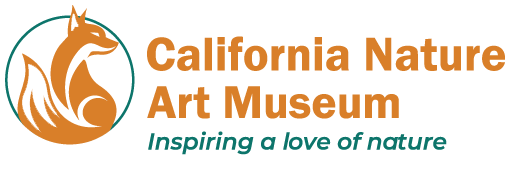John James Audubon: An American Woodsman
John James Audubon, Gray Fox Male
August 23, 2002
FOR IMMEDIATE RELEASE
FALL EXHIBIT AT THE WILDLING ART MUSEUM
TO FEATURE AUDUBON PRINTS
Los Olivos ~ In keeping with its mission to promote an understanding and appreciation of America’s wilderness through art, the Wildling Art Museum showed the prints of our nation’s best known artist-naturalist, John James Audubon. The Wildling exhibition, entitled “John James Audubon: American Woodsman,” opened on September 14 and continued through December 1, 2002.
Curated by Robert Dycus, an artist, exhibit designer and independent curator, formerly with the Santa Barbara Museum of Natural History, the exhibition at the Wildling included approximately 23 original prints of North American birds and mammals studied, drawn and painted by Audubon. It included hand-colored engravings of the Canada Warbler, White-Crowned Sparrow, California Condor, Black Billed Magpie , Passenger Pigeon and Carolina Parakeet from the original double elephant folio edition of The Birds of America printed in London between 1829 and 1838 by Robert Havell. Some of these birds are now extinct, and so these works of art provided a unique record of their appearance. The exhibition also included hand- colored lithographs of the American Elk, Common American Shrew and the Grey Fox from Audubon’s Viviparous Quadrupeds of North America (1845-1848).
Born in 1785 in Santo Domingo (now Haiti), the illegitimate son of a French sea captain and his Haitian servant, Audubon was brought up in France, where he evinced both a love of nature and artistic talent at an early age. Sent to America to manage one of his father’s properties near Philadelphia, he discovered that he had little business ability, but managed to support his young wife and family moving further west into Kentucky and Louisiana, where he did odd painting jobs for a living and invented a whole new way of representing birds in life-like attitudes and in their natural habitats.
In 1826 he went to London and embarked on his life-long work, the giant print edition of his The Birds of America. When it was eventually completed in 1838, this opus included 435 hand-colored engravings of 1065 birds of 489 species. As curator Dycus says, “accustomed to seeing specimens shown simply, against a blank background, some naturalists objected to Audubon’s use of dramatic poses and settings. Yet his attempt to position them as he thought they moved in the wild,…was truly revolutionary. Today, The Birds of America engravings and the brilliant watercolors upon which they are based are admired not only for their ornithological exactness, but also for their vitality and keen sense of design.”
In time Audubon’s achievement became recognized, and he returned to the United States a celebrated figure. The Audubon Society, a nationwide organization committed to studying and preserving the birds of America, was appropriately named after him. The public was invited to an opening reception at the Wildling Art Museum on September 14, 3-5 pm. The Museum was planning other programs and events in conjunction with this exhibition.
John James Audubon, Carolina Parakeet


